Table Of Content
- 1. What is Umbrella Branding?
- 2. How Does Umbrella Branding Work?
- 3. Parent Brand & Sub-Brands Relationship
- 4. Advantages of Umbrella Branding
- 5. Disadvantages & Challenges of Umbrella Branding
- 6. Types of Umbrella Branding Strategies
- 7. How to Implement a Successful Umbrella Branding Strategy
- 8. Real-World Examples of Umbrella Branding
What is Umbrella Branding?
Umbrella branding is a marketing strategy under which an existing brand name is used to cover products of different ranges under its product category. The strong existing brand name is used to get new products accepted by the market at a faster pace. In the business world, it is generally about effectiveness and trust-someone recognizes the name, thus trying out other offerings under it. This strategy works best when the products share similarity by values, quality, or the experience of the user. Instead of developing an identity for every item, umbrella branding does it all under one powerful narrative that speaks more widely to customer bases.
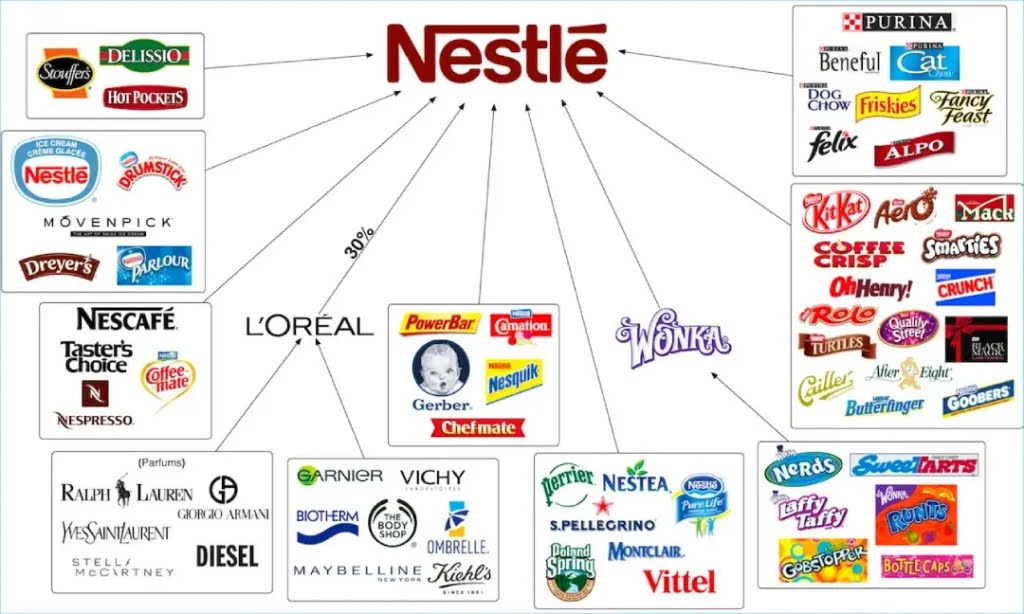
How Does Umbrella Branding Work?
The real power of umbrella branding lies in its establishing one single identity for all its products. If a consumer has trust in one product of the brand, he or she will more likely try the other products of that brand. This would greatly reduce the costs of advertising and enhance brand recall. With the alignment of new products to the value and images of the parent brand, companies would facilitate a smooth entrance into the market with stronger bonds to consumers. From communication through packaging and message to tone of advertisement, all touchpoint caters to the touch of an umbrella identity. Whether you are seeking how to create an umbrella brand or assessing an existing one, consistency and clarity are key.
Parent Brand & Sub-Brands Relationship
For example, the parent brand can be seen as the axis on which sub-brands revolve when talking about umbrella branding. That means it controls the emotional, visual, and cultural tone throughout whatever product line is being defined. Sub-brands, while given a level of autonomy in their operations, still relate their value system to that of the parent brand. This kind of relationship has to be properly managed: too much freedom and the sub-brand could drift away from core identity; too little, and it could risk losing relevance within niche markets. Successful umbrella brands come up with that kind of approach whereby an individual product feels distinct yet is unmistakably part of the legacy of the parent. This certainly is very effective in building familiarity and trust, and therefore engaging with the consumer in a long run.
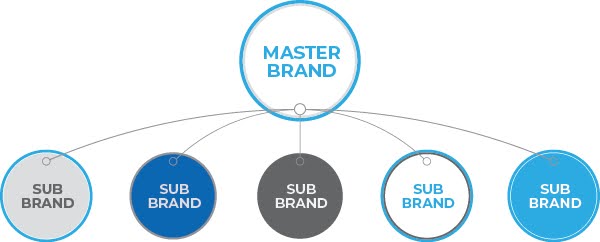
Advantages of Umbrella Branding
Cost-Effective Marketing & Branding
Umbrella branding is a practice that companies use to encase several products under one communicative strategy. It eases advertising, saves money on marketing expenses, and solidifies the memory of the brand recalled. Or, with a single campaign, brands get to reach so much of their wider audience very efficiently, which makes this practice most-appealing for organizations seeking such visibility as well as value across product lines.
Brand Trust & Recognition
The obvious benefits have made it considerably easier to obtain a viable market for new products without inordinate sales costs associated with awareness building. A strong parent brand holds consumer credence and acceptance for new products, hence making entry into the market with minimal resistance.
Easy Product Expansion
Launching a new product is way quicker and easier on the pocket when you have an umbrella brand. Since the parent brand already has the trust of its audience, customer acceptance is higher for new products. This also eases entry into the markets and decreases the cost of building brand awareness from scratch, which makes it a very strategic and successful move to expand into new categories.
Disadvantages & Challenges of Umbrella Branding
Brand Dilution Risk
A single poor product or a slightly controversial one can ruin the whole umbrella brand. A weak link can clip the image of the parent brand, thus making it difficult for other products to carry their weight of the reputation. Consistently high-quality and in-line products with the values of the brand are a must to avoid suffering damage in the long run.
Difficulties in Managing Diverse Products
Maintaining a singular brand image through broadly disparate products can prove challenging. The more different the offerings become in relation to target audience, function, or market, the less likely it becomes that consistent messaging can be achieved. Companies should keep a discerning eye over the entire product mix lest the hodgepodge lead to confusion and loss of a coherent umbrella identity.
Negative Publicity Impact
A bad press event referring to one product will drag all others down almost instantly under the same umbrella. Sometimes a giveaway is associated with a product recall; other times it's a mere ethical issue. Bad publicity travels fast. This sort of intertwined risk makes crisis management and brand monitoring necessary in order to protect each item's reputation in the portfolio.
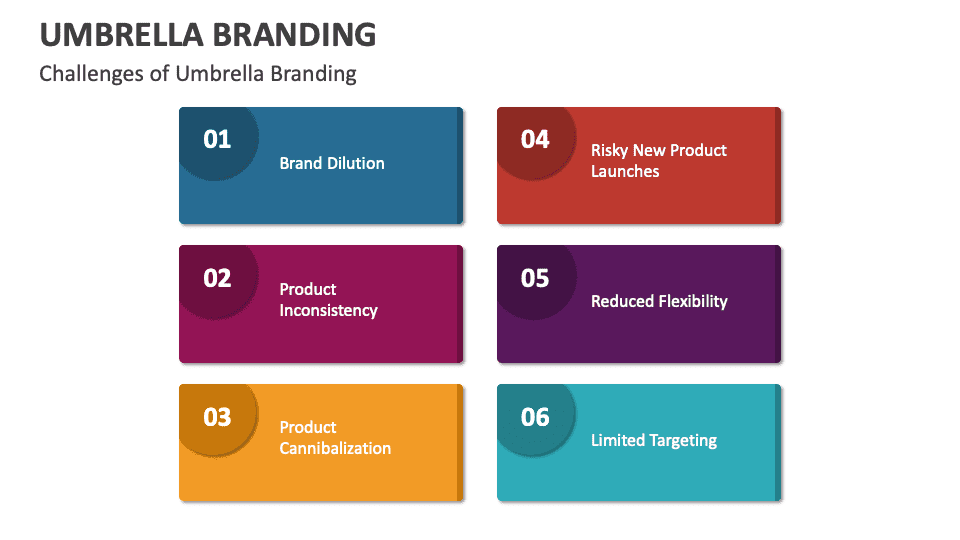
Types of Umbrella Branding Strategies
Family Branding
Family branding is the concept of having a brand name for an entire line of associated products. This builds familiarity, trust, and a conglomerate experience. Since the products in question are complementary, such as cleaning or food products, consistent messaging and shared values would create stronger consumer loyalty.
Corporate Branding
Corporate branding means that all products of whatever category share a common name. This makes it easier for consumers to recognize the brand and earn an image of quality and trustworthy products. The umbrella marketing strategy works because it covers every market sector under the same branding name, building long-term equity, and only companies such as Sony or GE would be expected to use this strategy.
Endorsed Branding
Endorsed branding allows brands of the parent and the sub-brands some degree of independence and freedom while being sustained by the reputation of the parent brand. The parent brand provides some flexibility without endangering niche markets.
How to Implement a Successful Umbrella Branding Strategy

Define a Strong Brand Identity
A uniform brand identity is the defining factor of umbrella branding. Through clear and coherent messaging, visuals, and tone, all products can be unified under one recognizable brand. This brand identity should encapsulate and stand for the company's values while winning acceptance from the target audience, thereby ensuring alignment across every touchpoint and marketing effort.
Maintain High Product Quality & Consistency
All under one umbrella of the brand must reach the same high standard required. Consumers expect all of the products to be of the same standard of quality, and while this one-time standard is falling below performance, it can hurt the image of the brand in its entirety. In this way, consistency enhances trust and contributes to the retention of customers, while every new product will further engrave the existing brand identity instead of diminishing it.
Leverage Cross-Promotion & Marketing
Cross-promotion allows old products to lay the groundwork for new ones. Related items are bundled together or just referenced with each other to glean their customer base. This promotes brand solidarity; it boosts visibility and encourages customers to try more products under that family-all the products they trust.
Real-World Examples of Umbrella Branding
Apple & Its Product Ecosystem
Umbrella branding allows Apple to tie all of its devices and services into one smooth operating ecosystem. Whether the iPhone, iPad, or Apple Watch, the customer experience remains consistent across premium design, intuitive functionality, and brand esteem. Each product supports the others, thus further building up the Apple brand.

Nestlé’s Wide Range of Food Products
Nestlé sells many food and beverage products under one name. Nestlé gives products from KitKat to Nescafé notoriety and assurance. Though the items serve varying functions for different markets, these items are tied together by branding, trust, and nutrition against the promise of reliability.
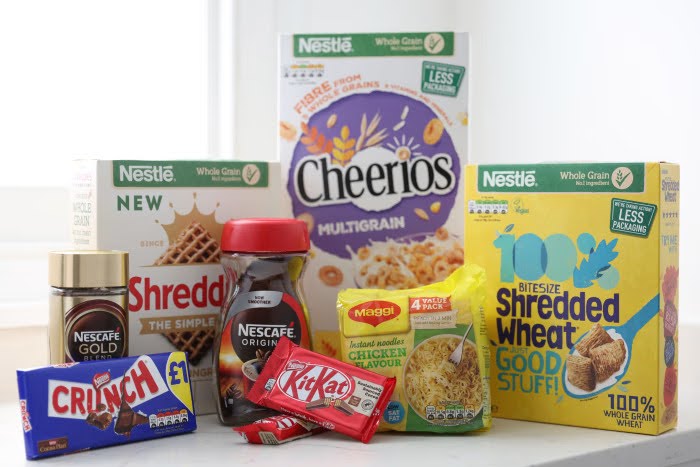
Unilever’s Diverse Brand Portfolio
Household and personal care brands in all phases of their lives are, in fact, managed by Unilever. Different markets are served by Dove, Rexona, and Lipton; however, they are all considered products that reflect sustainability and quality as core values upon which Unilever has rested. In this way, there can be considerable product differentiation under the same parent brand without letting go of the trust associated with the parent brand.
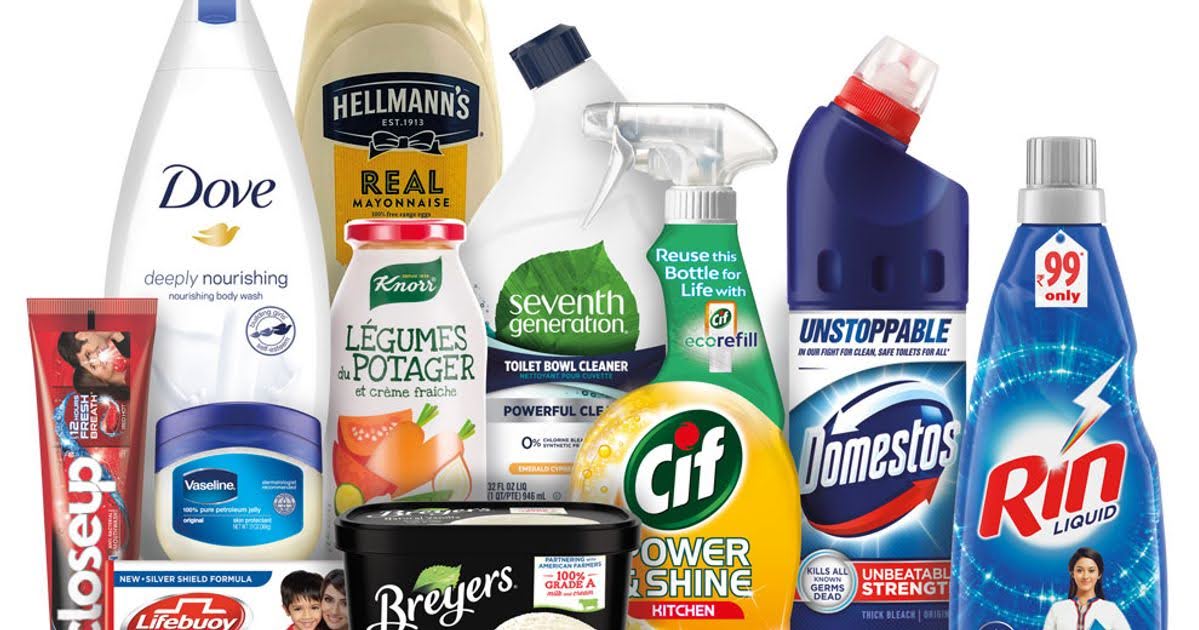
FAQs
Umbrella branding congregates several products under one identity, while individual branding establishes separate individualities for each product. Sharing positive experiences maps to the former, whereas the latter allows distinct positioning.
Allowing small businesses to implement umbrella branding means placing group products under one name, engendering credibility at a faster pace, thus aiding in promoting their limited budgets.
Branding boosts confidence by transferring goodwill for one product onto others, inducing a sense of reliability and familiarity across the brand.
Among industries such as fast-moving consumer goods, tech, food and beverages, and personal care, umbrella branding takes deep roots due to its need for an element of consistent trust across the broad product portfolio.
Among key risks is brand dilution, which leads to mixed branding and allows unwelcome publicity to spread among the products. Hence, careful brand management, which makes up for the downsides, becomes essential.



